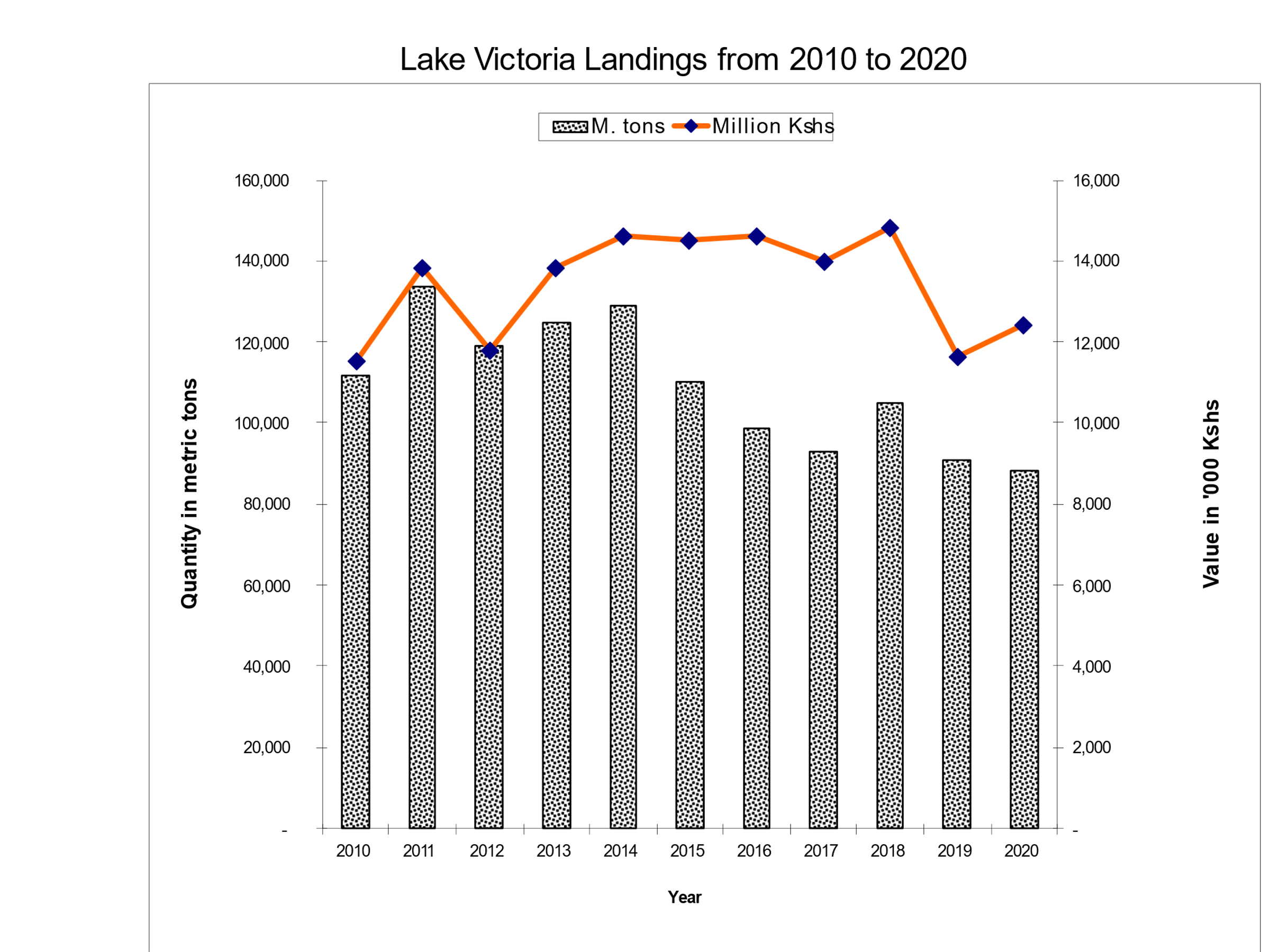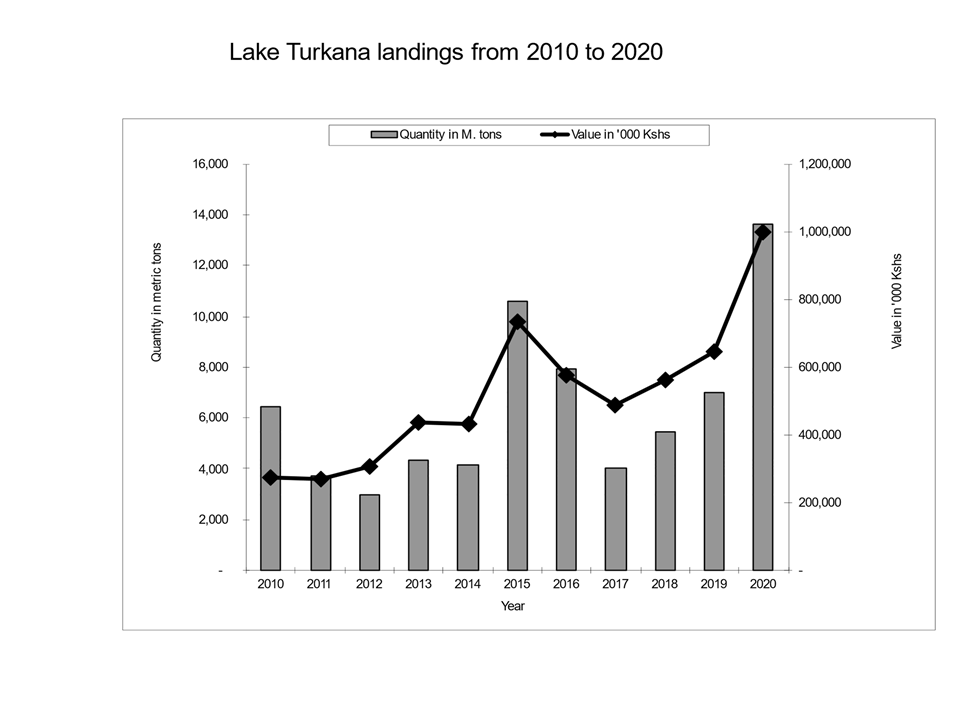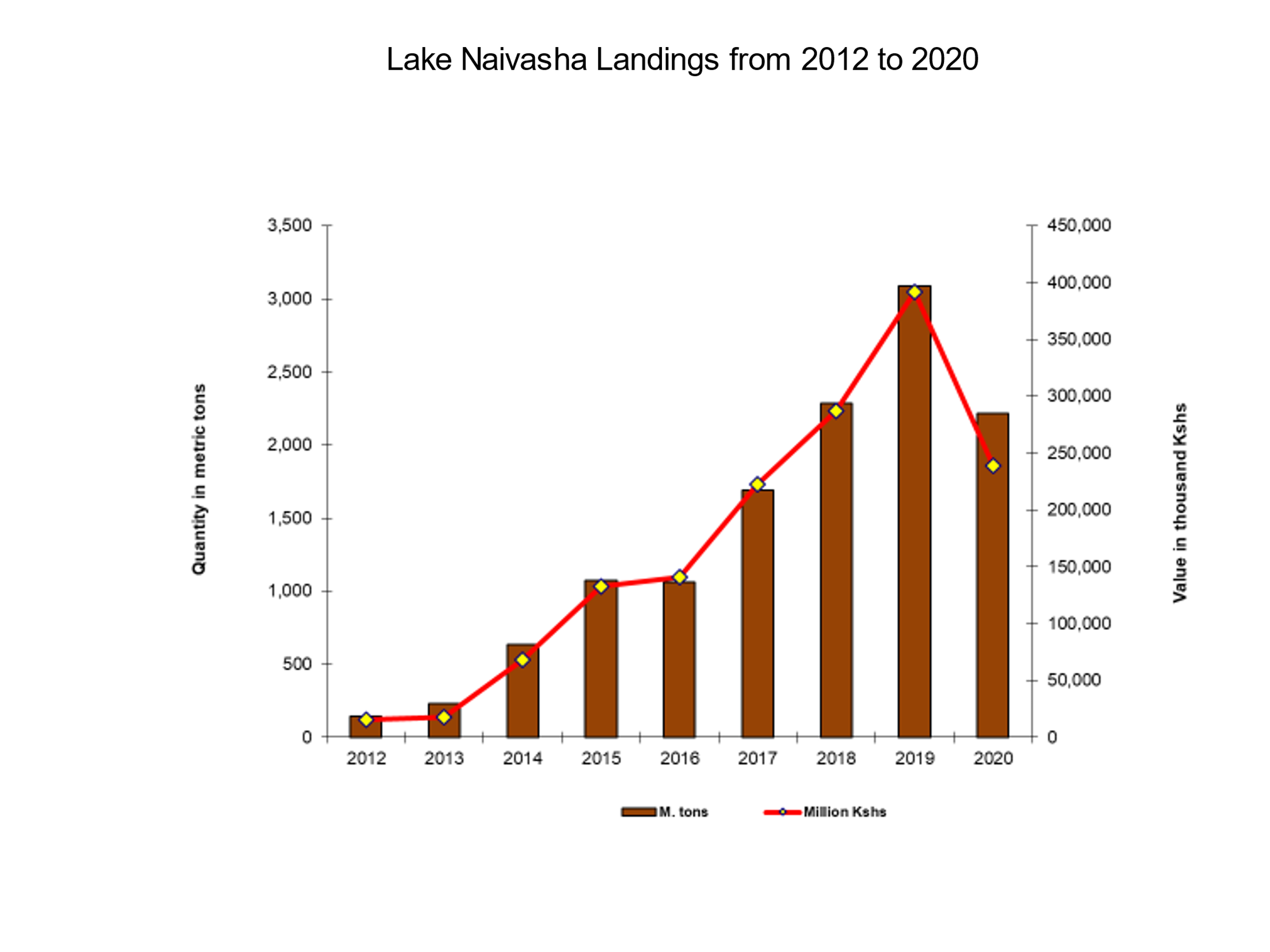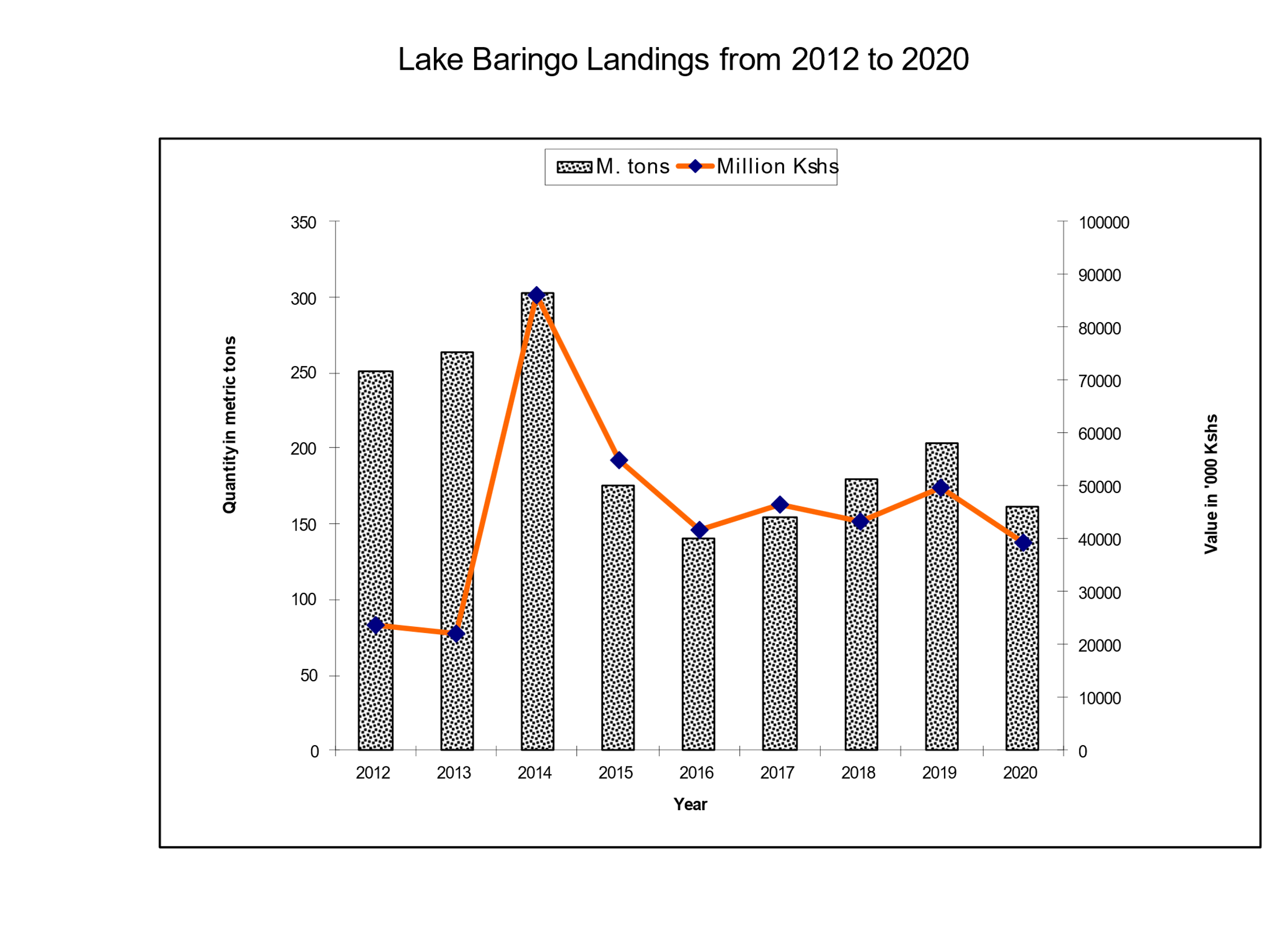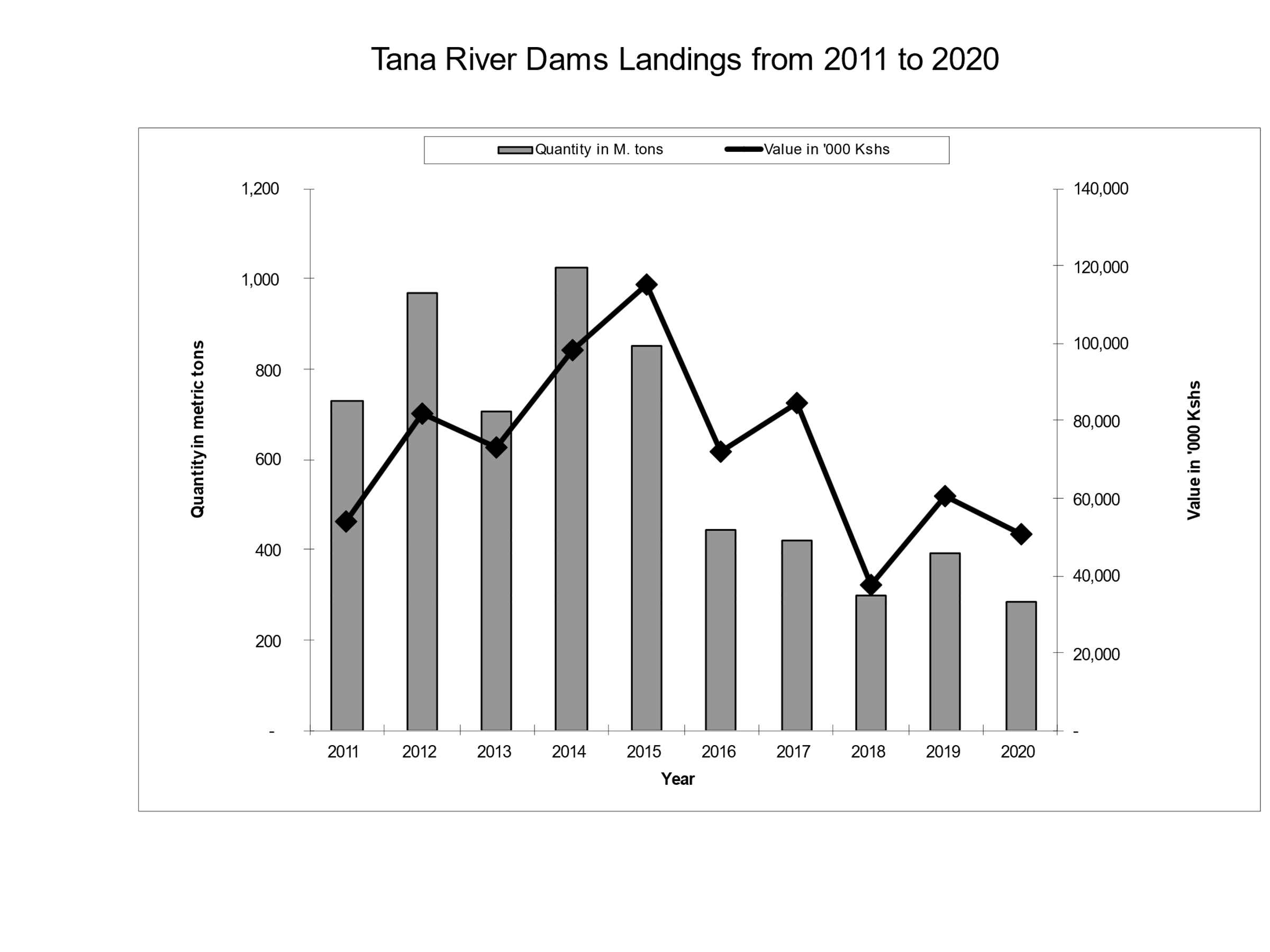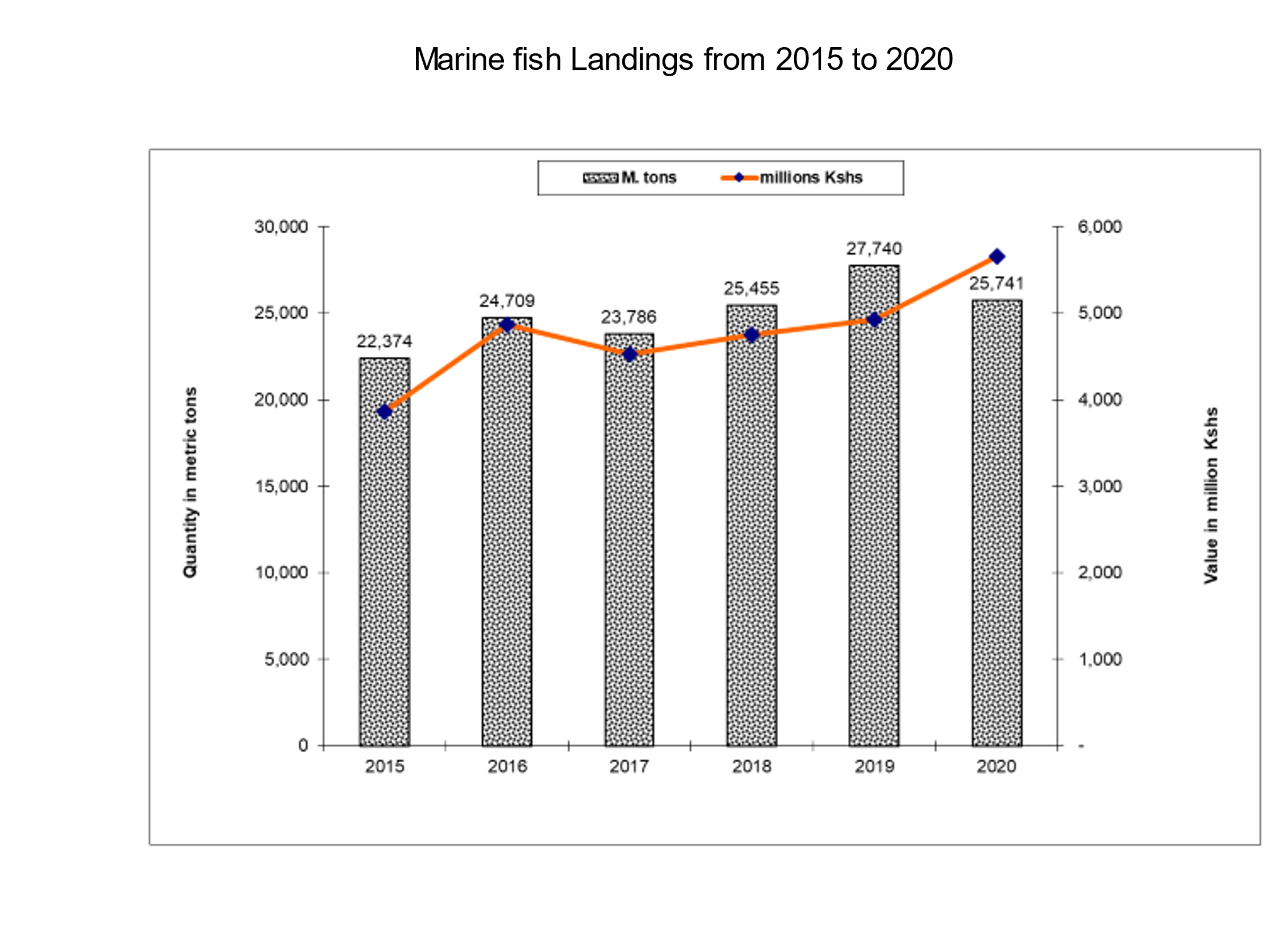Capture Fisheries
OVERVIEW OF CAPTURE FISHERIES IN KENYA
The capture fisheries comprise inland and marine fisheries. Inland fisheries include lakes, rivers and dams. Currently, capture fisheries is mainly from lakes Victoria, Turkana, Naivasha, Baringo, Jipe, Tana River dams, Tana river delta and Indian Ocean and it accounts for 87% of the total annual national fish production. Lake Victoria currently accounts for about 70% and 60% of all inland fisheries and total national fish production respectively. Marine Fisheries contribute about 17% of the total annual productions.
The inland water resources include lakes, dams and rivers of varying sizes. Some of the major lakes include: Lake Turkana (6,405 Km2), Lake Victoria-Kenyan side (6% of the whole lake =4,128 km2), Naivasha (210 Km2), Baringo (129 Km2), and Lake Jipe (39 Km2).
Major rivers include Tana (700 Km), Athi/Galana/Sabaki (530 Km), Ewaso-Ngiro-North (520 Km), Kerio (350 Km), Suam-Turkwel (350 km), Mara (280 km), Nzoia (240 km), Voi (200 km), Yala (170 km), Ewaso-Ngiro-south (140 km), Sondu (105 km), Malewa (105 km) and Kuja (80 km). Across the country are also public dams stocked with fish.
Further to these inland water resources, Kenya also enjoys a vast coastline of 650 km on the Western Indian Ocean, besides a further 200 nautical miles Exclusive Economic Zone (EEZ) under Kenyan jurisdiction. The annual fish landings from the marine fisheries is about 26,000 MT annually against a potential of 150,000 – 300,000 MT.
Rationale:
To develop, implement and review policies, standards and guidelines regarding the conservation, management, sustainable use, protection and utilization of capture fisheries resources.
b) Functions:
- implement and review policies, standards and guidelines regarding the conservation, management, sustainable use, protection and utilization of capture fisheries resources;
- Create public awareness and support for fisheries conservation, management, development and sustainable use;
- Collect and analyze data and disseminate information on capture fisheries resources
- Collaborate with county, national, regional and international stakeholders on conservation and management of fisheries resources;
- Develop/ advise on appropriate capture fisheries resources infrastructure that relates to the mandate under the Fisheries Management and Development (FMD) Act No.35 of 2016 and the Constitution;
- Promotion of the development of traditional and industrial fisheries and related industries;
- Collaborate with Kenya Marine and Fisheries Research Institute and other research institutions in capture fisheries research;
- Protect areas declared as national sanctuaries to enhance brood and spawn of nominated species;
- Identify research priorities in fisheries;
- Coordinate and or undertake Monitoring Control and Surveillance within the scope of the FMD Act; and
- Develop guidelines for the preparation of fisheries management plans for the Kenya fishery waters.
Further, the Directorate is organized into the following two (2) departments namely:
- Fisheries Management and Operations; and
- Fisheries Compliance and Enforcement.
Capture Fisheries Production Trends
